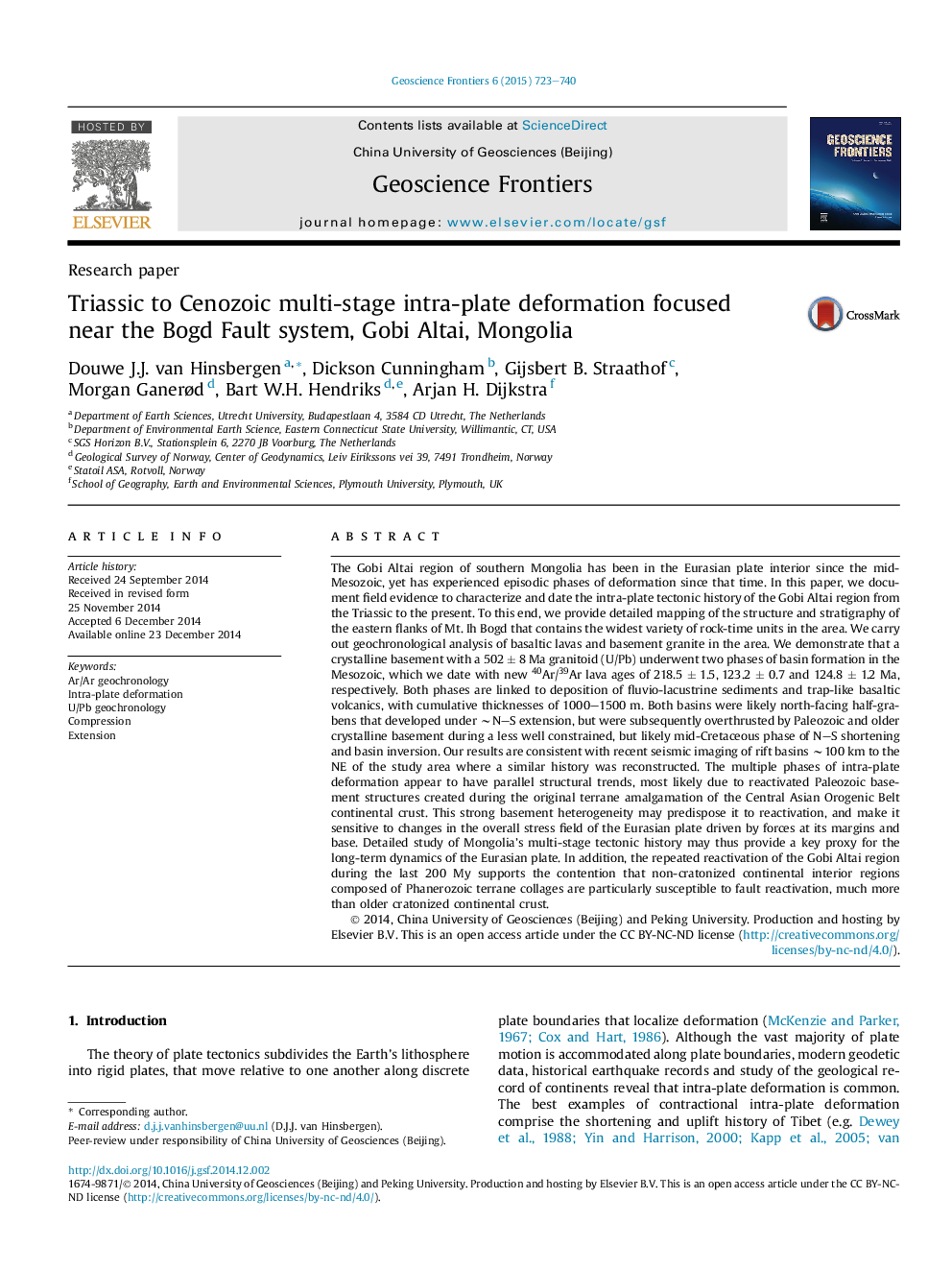| کد مقاله | کد نشریه | سال انتشار | مقاله انگلیسی | نسخه تمام متن |
|---|---|---|---|---|
| 4681571 | 1348858 | 2015 | 18 صفحه PDF | دانلود رایگان |

• N-S extension created half-grabens in Gobi Altai between 220–190 Ma and 125–115 Ma.
• Half-grabens were overthrusted by crystalline basement ridges in mid-Cretaceous.
• Mesozoic intra-plate tectonics are proxy for stress-state of Eurasian plate.
The Gobi Altai region of southern Mongolia has been in the Eurasian plate interior since the mid-Mesozoic, yet has experienced episodic phases of deformation since that time. In this paper, we document field evidence to characterize and date the intra-plate tectonic history of the Gobi Altai region from the Triassic to the present. To this end, we provide detailed mapping of the structure and stratigraphy of the eastern flanks of Mt. Ih Bogd that contains the widest variety of rock-time units in the area. We carry out geochronological analysis of basaltic lavas and basement granite in the area. We demonstrate that a crystalline basement with a 502 ± 8 Ma granitoid (U/Pb) underwent two phases of basin formation in the Mesozoic, which we date with new 40Ar/39Ar lava ages of 218.5 ± 1.5, 123.2 ± 0.7 and 124.8 ± 1.2 Ma, respectively. Both phases are linked to deposition of fluvio-lacustrine sediments and trap-like basaltic volcanics, with cumulative thicknesses of 1000–1500 m. Both basins were likely north-facing half-grabens that developed under ∼N–S extension, but were subsequently overthrusted by Paleozoic and older crystalline basement during a less well constrained, but likely mid-Cretaceous phase of N–S shortening and basin inversion. Our results are consistent with recent seismic imaging of rift basins ∼100 km to the NE of the study area where a similar history was reconstructed. The multiple phases of intra-plate deformation appear to have parallel structural trends, most likely due to reactivated Paleozoic basement structures created during the original terrane amalgamation of the Central Asian Orogenic Belt continental crust. This strong basement heterogeneity may predispose it to reactivation, and make it sensitive to changes in the overall stress field of the Eurasian plate driven by forces at its margins and base. Detailed study of Mongolia's multi-stage tectonic history may thus provide a key proxy for the long-term dynamics of the Eurasian plate. In addition, the repeated reactivation of the Gobi Altai region during the last 200 My supports the contention that non-cratonized continental interior regions composed of Phanerozoic terrane collages are particularly susceptible to fault reactivation, much more than older cratonized continental crust.
Figure optionsDownload as PowerPoint slide
Journal: Geoscience Frontiers - Volume 6, Issue 5, September 2015, Pages 723–740